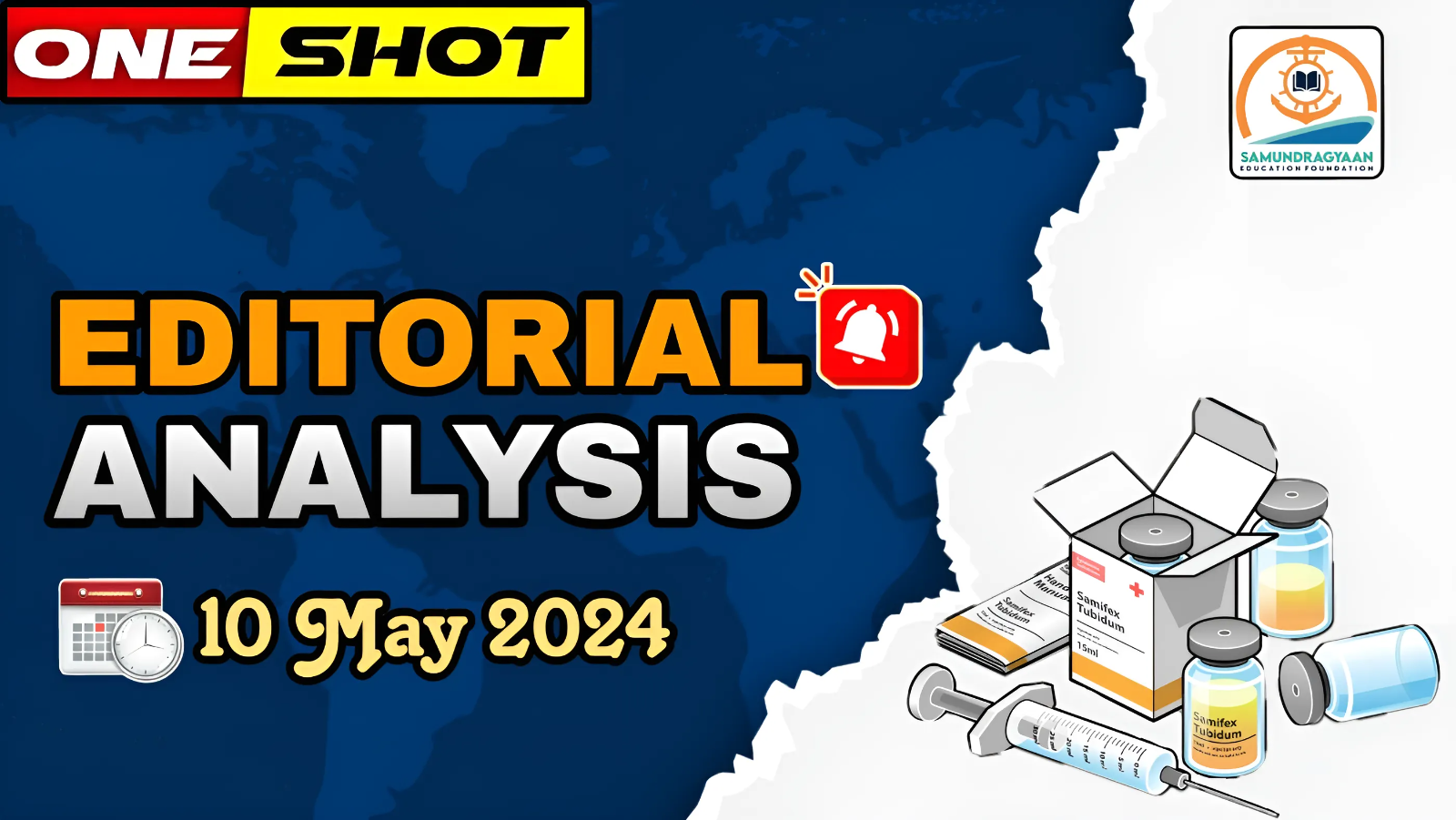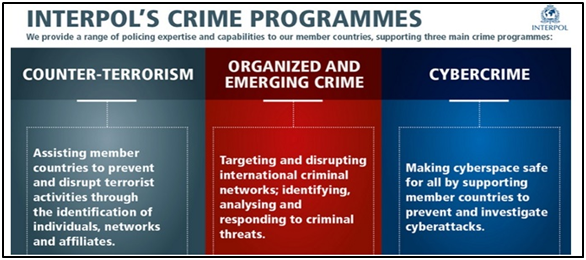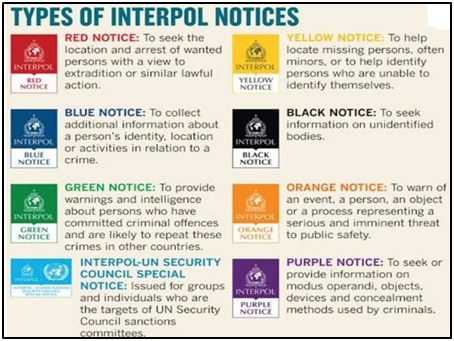Editorials & Articles : 10 May 2024
Cancer Screening at Ayushman Centres
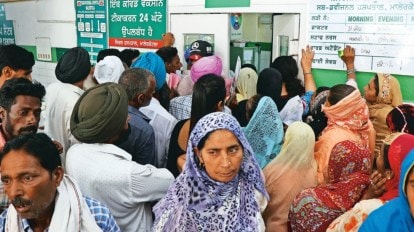
Why in news?
- In June 2023, the NITI Aayog had prepared a report to study the performance of the Ayushman Bharat Scheme.
- The report has not been made public yet. However, it is learnt that its findings have been shared with the Ministry of Health and Family Welfare.
What’s in Today’s Article?
- Ayushman Bharat Scheme (Objective, Components)
- Ayushman Bharat HWCs (Purpose, Features, etc.)
- Key Findings of the Report
About Ayushman Bharat Scheme:
- Ayushman Bharat, a flagship scheme of Government of India, was launched in 2018 as recommended by the National Health Policy (2017).
- Objective: To achieve the vision of Universal Health Coverage.
- This initiative has been designed to meet Sustainable Development Goal number 3 and its underlining commitment, which is to “leave no one behind.”
- Ayushman Bharat adopts a continuum of care approach, comprising of two inter-related components, which are:
- Pradhan Mantri Jan Arogya Yojana (PM-JAY)
- It provides health insurance cover of Rs. 5 lakhs per year to over 10 crore poor and vulnerable families for seeking secondary and tertiary care.
- Pradhan Mantri Jan Arogya Yojana (PM-JAY)
-
- Health and Wellness Centres (HWCs)
Ayushman Bharat Health and Wellness Centres (HWCs):
- In February 2018, the Government of India announced the creation of 1,50,000 Health and Wellness Centres (HWCs) by transforming the existing Sub Centres and Primary Health Centres.
- The goal is to ensure access to quality healthcare closer to the community, thereby improving health outcomes and reducing out-of-pocket healthcare expenditures for individuals and families.
- These centres provide free essential medicines and diagnostic services, teleconsultation, and health promotion including wellness activities like Yoga.
- The HWCs also offer annual screening for those 30 years or older for Non Communicable Diseases such as:
- Hypertension, Diabetes, and three of the most common Cancers in India — oral, breast and cervical.
Cancer Menace in India:
- In 2022, India had more than 14.1 lakh new cancer cases and over 9.1 lakh deaths due to the disease.
- Breast cancer was the most common, according to the latest estimates of the disease’s global burden by the World Health Organization (WHO).
- Most common Cancers among Men:
- Cancers of lip/oral cavity and lung were the most common ones in men, accounting for 15.6 and 8.5 per cent of the new cases, respectively.
- Most common Cancers among Women:
- Cancers of breast and cervix were the most frequent ones in women, making up close to 27 and 18 per cent of the new cases.
- Globally, the WHO estimated 2 crore new cancer cases and 97 lakh deaths in the year 2022.
Key Findings of the Report:
- Six years since the launch, the Ayushman Bharat insurance scheme has been availed of by more than 5.47 crore users across the country.
- However, when it comes to cancer screening at the HWCs, there is a huge gap.
- Negative Takeaways:
- Currently, there are three distinct methods of screening for the three cancers:
- Oral visual examination for oral cancer;
- Visual inspection with acetic acid for cervical cancer (under this, the cervix is examined after the application of 3-5% acetic acid); and
- Clinical breast examination (CBE) for breast cancer for the people in the age-group 30-65 years.
- Nurses and Midwives at the HWCs were meant to be trained in these three screening methods.
- The training is required to sharpen the screening skills for cancer. However, this hasn’t been achieved to the extent that was expected.
- For example, provision for screening of cervical cancer is yet to be operationalized.
- The report also flagged that although NCD screening was underway at most facilities, yearly screening was still largely absent.
- The NITI Aayog teams also found that the HWC staff had limited or no knowledge of the fact that the screening for hypertension and diabetes needed to be done on an annual basis.
- Currently, there are three distinct methods of screening for the three cancers:
- Positive Takeaways:
- The report said that the infrastructure in HWCs was in accordance with standards as envisaged in the operational guidelines.
- All basic devices such as stethoscope, BP apparatus (digital), weighing scale (adult and infant), clinical thermometer (oral and digital) were available and functional.
- The NITI Aayog teams found that medicines and diagnostic tests were available free-of-cost in all the visited facilities.
Need for a new agricultural export-import policy
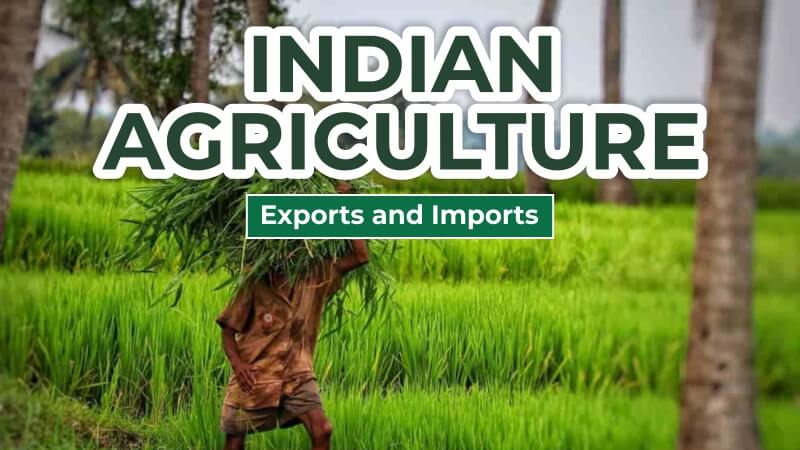
Why in news?
- India’s agricultural exports decreased by 8.2% in the fiscal year ending March 31, 2024, due to restrictions on shipments of various commodities (from cereals and sugar to onions).
What’s in today’s article?
- Overall agricultural scenario
- Analysis of Agricultural export
- Agri exports: key trends
- Agri imports – key trends
- Key takeaways
Overall agricultural scenario in India
- Growth rate and contribution
- According to the second advance estimates, agriculture and allied sector is projected to grow 0.7% in FY24.
- The agricultural sector is estimated to constitute 18 percent of India’s GVA in FY24.
- Production
- The total food grains production for FY23 was 329.7 million tonnes, marking a rise of 14.1 million tonnes compared to the previous year.
- The horticulture production was 355.25 million tonnes which is the highest ever for Indian Horticulture (as per third advance estimates).
- India’s global dominance extends across agricultural commodities, making it the largest producer of milk, pulses, and spices worldwide.
- Additionally, India ranks second-largest producer of fruits, vegetables, tea, farmed fish, sugarcane, wheat, rice, cotton, and sugar.
- The total food grains production for FY23 was 329.7 million tonnes, marking a rise of 14.1 million tonnes compared to the previous year.
Analysis of Agricultural export
- Statistics
- The total value of farm exports was $48.82 billion in 2023-24, according to Department of Commerce data.
- It has shown a decline from the record $53.15 billion in 2022-23 and $50.24 billion in the previous fiscal year.
- Trends Over Years
- During the initial years of the present govt, agricultural exports dropped from $43.25 billion in 2013-14 to $35.60 billion in 2019-20, accompanied by an increase in imports from $15.53 billion to $21.86 billion (during the same period).
- During this period, global agri-commodity prices fell significantly, leading to a decline in India’s agricultural exports.
- The UN Food and Agriculture Organization’s (FAO) food price index dropped from an average of 119.1 to 96.5 points between 2013-14 and 2019-20.
- Low international prices made India’s exports less competitive and increased its vulnerability to imports.
- Impact of Global Events
- The global price recovery after the Covid-19 pandemic and Russia’s invasion of Ukraine caused India’s farm exports and imports to reach all-time highs in 2022-23, with the FAO index soaring to 140.8.
- However, exports decreased in the fiscal year that just ended.
Agri exports: key trends
- Impact of ban on export of sugar and non-basmati rice
- The fall in exports to have been led primarily by sugar and non-basmati rice.
- The government hasn’t allowed any sugar to go out of the country during the current production year from October 2023.
- Exports of the sweetener were valued at only $2.82 billion in 2023-24, after peaking at $5.77 billion and $4.60 billion in the preceding fiscals.
- Concerns over domestic availability and food inflation have similarly triggered a ban on exports of all white non-basmati rice since July 2023.
- Currently, only parboiled grain shipments are being permitted within the non-basmati segment, while also attracting a 20% duty.
- These restrictions have pulled down overall non-basmati exports from a record $6.36 billion in 2023-23 to $4.57 billion in 2023-24.
- Impact of export restrictions on wheat and onion
- Wheat exports were altogether stopped in May 2022, following which their value plunged to $56.74 million in 2023-24, after reaching an all-time-high of $2.12 billion in 2021-22.
- Similarly, the onion export was also banned.
- On May 4, 2024, the Centre lifted a ban on exports of the bulb. Simultaneously, a floor price of $550 per tonne, along with a 40% duty, was imposed.
- Trend of other major agri export items
- Most of the other major agri export items — barring marine products, castor oil and other cereals (mainly maize) — have posted growth.
- Basmati rice exports fetched $5.84 billion in 2023-24, surpassing the previous high of $4.86 billion achieved back in 2013-14.
- Spices exports, too, crossed the $4 billion mark for the first time.
Agri imports – key trends
- Dip in imports of edible oils
- Analysis of data shows that the 7.9% dip in overall agri imports during 2023-24 was largely due to a single commodity – edible oils.
- India’s imports of vegetable fats topped $20 billion in 2022-23.
- That was the year immediately after the Russia-Ukraine war when the global price of vegetable oils increased.
- However, 2023-24 saw lowering of global prices of the vegetable oil. This, in turn, reduced the import bill to below $15 billion during last fiscal.
- Increase in import of pulses
- The import of pulses almost doubled to $3.75 billion in 2023-24, the highest since the $3.90 billion and $4.24 billion levels of 2015-16 and 2016-17 respectively.
Key takeaways
- Policy stability and predictability is the key
- Farmers and agri-traders, like all businessmen, want policy stability and predictability.
- When governments resort to banning/restricting agri exports, they usually privilege the interests of consumers over producers.
- These actions hurt more when taken overnight, like with wheat exports.
- Building export markets takes time and effort.
- A more predictable and rules-based policy — say, introducing temporary tariffs instead of outright bans or quantitative restrictions — is what is recommend.
- Zero/low import duties are not suitable for crop diversification
- The govt has done away with import duties on most pulses — arhar (pigeon pea), urad (black gram), masoor (red lentils), etc.
- The rate has been kept at 5.5% for crude palm, soyabean and sunflower oil.
- The above zero/low tariffs are at variance with the government’s own objective to promote crop diversification.
- The govt is taking steps to wean away farmers from rice, wheat and sugarcane to growing pulses and oilseeds, which are less water-guzzling and also significantly imported.
- The govt has done away with import duties on most pulses — arhar (pigeon pea), urad (black gram), masoor (red lentils), etc.
Blue Corner Notice Against Sitting MP

Why in news?
- Amid a political storm in Karnataka over grave allegations of sexual abuse against Prajwal Revanna, sitting Hassan MP, Interpol has issued a Blue Corner notice against the absconding politician.
What’s in today’s article?
- Interpol (about, functions, types of Interpol notices, general assembly)
- India and Interpol
Interpol
- About
- Full Name – International Criminal Police Organisation.
- Interpol is the radio-telegraph code for the organisation.
- Interpol is an international police organisation made up of 194 member countries.
- It does not work under UN.
- It has enjoyed a special role – that of Permanent Observer at the United Nations – since 1996.
- It was founded in 1923 and is headquartered at Lyon, France.
- Full Name – International Criminal Police Organisation.
- Functions
- It is not a police force in the traditional sense—its agents are not able to arrest criminals.
- It is more of an information-sharing network.
- It provides a way for national police forces to co-operate effectively and tackle international crime ranging from human trafficking and terrorism to money laundering and illegal art dealing.
- Sharing of information is done by issuing colour-coded notices in four languages – English, Spanish, French, and Arabic.
- The organization operates centralised criminal databases that contain fingerprint records, DNA samples and stolen documents.
- Functioning
- The agency has a National Central Bureau (NCB) in all member countries, which is a single point of contact between law enforcement agencies of that country and Interpol.
- NCB serves as the national platform for cooperation between domestic law enforcement units and the international police community.
- Types of Interpol Notices
- Interpol issues different types of notices which have different objectives. Types of notices issued – Red, Blue, Yellow, Black, Orange, Purple, Green etc.
- Red Notice – A notification that a member state would like someone arrested.
- A ‘Blue Corner’ notice is issued when the case is related to missing persons.
- Also called an enquiry notice, such an alert is sent for additional information from member States about a person, to verify their identity, location, or criminal record concerning a criminal investigation.
- The ‘INTERPPOL-United Nations Security Council Special Notice’ is issued for entities and individuals who are the targets of the UN Security Council Sanctions Committees.
- States are not obliged to follow these notices, but will often treat them as a warrant for someone’s arrest and extradition.
- Differences between Blue Corner notice and Red Corner Notice
- The purpose of a ‘blue’ notice is to gather information about a person of interest in an investigation.
- On the other hand, the red notice is generally issued against a person wanted for extradition, or serve a sentence based on a court decision, or a similar lawful action.
- In the present case, the investigating team moved for a Blue Corner alert against Mr. Revanna, considering that the investigation is in the early stages and the police are yet to file criminal charges.
India and Interpol
- India has been a member since 1956.
- Like any member nation, India maintains a National Central Bureau (NCB). The NCB is the designated contact point for the Interpol.
- In India’s case, The CBI is the designated nodal body for the Interpol in India.
- India has collaborated with the Interpol in tackling a myriad of organised crimes such as poaching, wildlife trafficking, spurious drugs and fake medicine rackets, etc.
- India hosted the Interpol General Assembly in 2022 as part of celebrations of the 75th anniversary of Indian Independence.
- Also, in November 2021, CBI Special Director Praveen Sinha was elected as a delegate for Asia on the executive committee of the Interpol.
Comprehensive Guidelines on the Diet of Vulnerable Groups
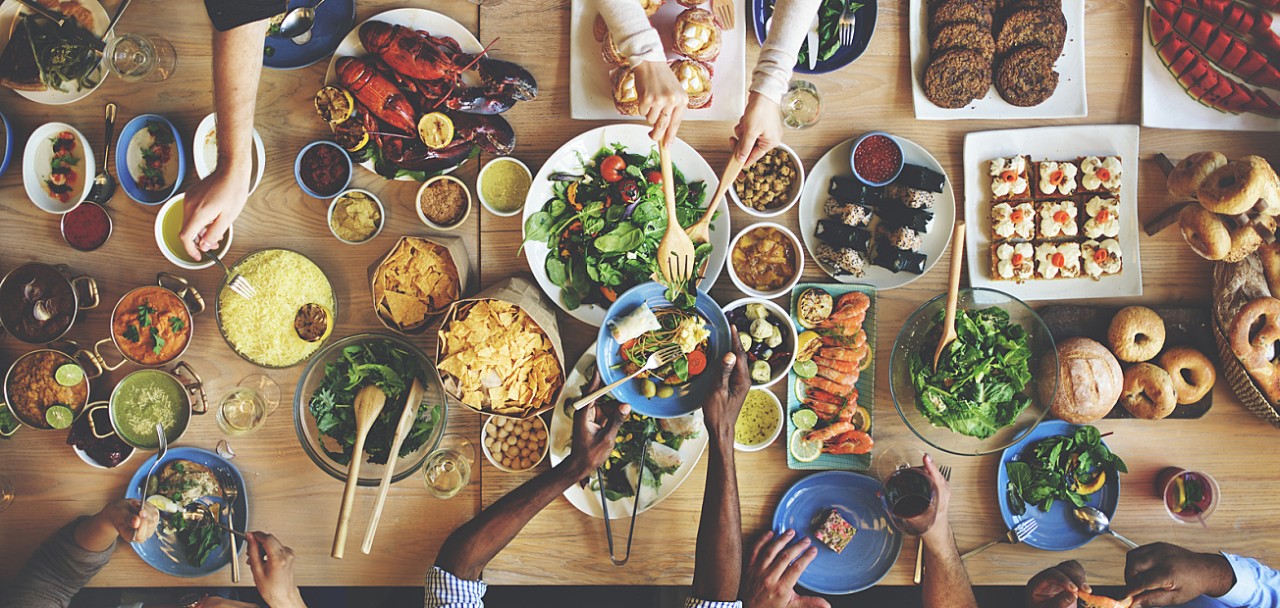
Why in News?
- India’s premier nutrition research institute – National Institute of Nutrition (NIN), has published comprehensive guidelines on the diet of vulnerable groups, including pregnant and lactating women, and children and the elderly.
- This comes as the noncommunicable diseases (NCDs) such as cardiovascular disease, cancers, diabetes, etc., are rising among adolescents and even children.
What’s in Today’s Article?
- What are Noncommunicable Diseases (NCDs)?
- Status of Non-Communicable Diseases (NCDs) in India
- Initiatives of the Indian Government to Reduce Prevalence of NCDs in the Country
- The Comprehensive Guidelines on the Diet of Vulnerable Groups
What are Noncommunicable Diseases (NCDs)?
- Also known as chronic diseases, NCDs tend to be of long duration and are the result of a combination of genetic, physiological, environmental and behavioural factors.
- The main types of NCD are –
- Cardiovascular diseases (CVDs) (such as heart attacks and stroke),
- Cancers,
- Chronic respiratory diseases (CRDs) (such as chronic obstructive pulmonary disease and asthma) and
- Diabetes
- NCDs disproportionately affect people in low- and middle-income countries, where more than three quarters of global NCD deaths (31.4 million) occur.
- In line with Sustainable Development Goal 3, the global ambition is to reduce premature mortality from NCDs by one-third by 2030.
Status of Non-Communicable Diseases (NCDs) in India:
- According to the “India: Health of the Nation’s States” report by Indian Council of Medical Research (ICMR), the proportion of deaths due to NCDs in India have increased from 37.9% in 1990 to 61.8% in 2016.
- This has now increased to 63% (of all deaths in India).
- The human impact of NCDs in India is most severe among those over 30 years old, with CVDs being the leading cause of NCD-related deaths at 27%, followed by CRDs (11%), cancers (9%), diabetes (3%), and other (13%).
- The four major NCDs (mentioned above) share four behavioural risk factors – unhealthy diet, lack of physical activity, and use of tobacco and alcohol.
- Also, the NCDs are expected to cost India $3.55 trillion in lost economic output between 2012 and 2030.
Initiatives of the Indian Government to Reduce Prevalence of NCDs in the Country:
- Rebranded and expanded NPCDCS to NP-NCD:
- The National Program for Prevention and Control of Cancer, Diabetes, CVDs & Stroke (NPCDCS, launched in 2010) has been rebranded into the National Programme for Prevention and Control of NCDs (NP-NCD).
- Also, its scope has been broadened to include Chronic Obstructive Pulmonary Disease (COPD) and Asthma, Chronic Kidney Disease (CKD), and Non-Alcoholic Fatty Liver Disease (NAFLD).
- Revised operational guidelines of NP-NCD: It underscores the growing financial burden of NCDs on individuals and the economy, a situation that’s driving a focus on primary and secondary prevention to improve the quality-of-care services.
- Providing standard care: The union health ministry is aiming to provide standard care to 75 million people with hypertension and diabetes by 2025, representing the world’s largest coverage of NCDs in primary healthcare.
- National Institute of Nutrition (NIN):
- It was founded by Sir Robert McCarrison in the year 1918 as ‘Beri-Beri’ enquiry unit and emerged as a full-fledged institute (under ICMR and located in Hyderabad) in 1967.
- It has attained global recognition for its pioneering studies on various aspects of nutrition research, with special reference to protein energy malnutrition (PEM).
The Comprehensive Guidelines on the Diet of Vulnerable Groups:
- Key highlights of the guidelines:
- The guidelines say an estimated 56.4% of India’s total disease burden can be attributed to unhealthy diets.
- A healthy diet and physical activity can prevent 80% of Type 2 diabetes cases, and significantly reduce the burden of heart disease and high blood pressure.
- Key focus areas of the guidelines – Children:
- Optimal nutrition for mother and child from conception till the age of 2 years is linked to proper growth and development.
- It can prevent all forms of undernutrition, including micronutrient deficiencies, and obesity.
- The report quotes the Comprehensive National Nutrition Survey 2019, which showed high prevalence of lifestyle conditions even in children.
- India is facing the dual nutrition challenge (both micronutrient deficiencies and diseases of overnutrition)
- A study on malnutrition said that undernutrition continues to be high in India, but obesity has increased significantly over the last 30 years.
- Incidence of micronutrient (zinc, iron, vitamins) deficiencies ranged from 13% to 30% of children between ages 1 and 19.
- While severe forms of undernutrition such as marasmus (a deficiency of macronutrients such as carbohydrates and proteins) and kwashiorkor (deficiency of proteins) have disappeared from the country, manifestations such as anaemia continue.
- The faulty dietary pattern in which unhealthy, highly processed, high-fat, sugar and salt (HFSS) foods have become more affordable and accessible, contributes to deficiencies in iron and folic acid.
- Recommendations of the guidelines:
- The guidelines recommend getting required nutrients from at least eight food groups, including vegetables, leafy vegetables, roots and tubers, dairy, nuts, and oils.
- Consumption of cereals should be restricted and more proteins (pulses, meat, poultry, fish) should be consumed.
- Achieving adequate levels of essential polyunsaturated fatty acids (PUFA) and B12 is a challenge for vegetarians.
- The guidelines recommend consumption of flax seeds, chia seeds, walnuts, vegetables, and greens.
- The report says salt consumption should be restricted to 5g a day, and strongly recommends against consuming highly processed foods that are typically high in fats, salt, and sugar.
- Age/group-specific recommendations:
- Pregnant women: The guidelines recommend consumption of lots of fruit and vegetables, especially those high in iron and folate content.
- Infants and children: For the first six months, infants should only be breastfed, and after age 6 months complementary foods must be included.
- Elderly: The elderly should consume foods rich in proteins, calcium, micronutrients, and fibre. Exercise is important in order to maintain bone density and muscle mass.

